Dr. Phil Zeltzman’s Blog
What caused Kona to lose a kidney?
Kona, a female Lab, was only 1 year old, yet she had had several bladder infections.

Rather than keeping her on repeated antibiotics, her family vet looked into the situation and discovered that Kona had an extra fold over her vulva.
This common (and under-diagnosed) condition is called a “redundant vulvar fold,” “vulvar fold dermatitis,” “recessed vulva” or “hooded vulva” (see below a picture in another patient, a 6 year old Newfie, where the vulva is barely visible).
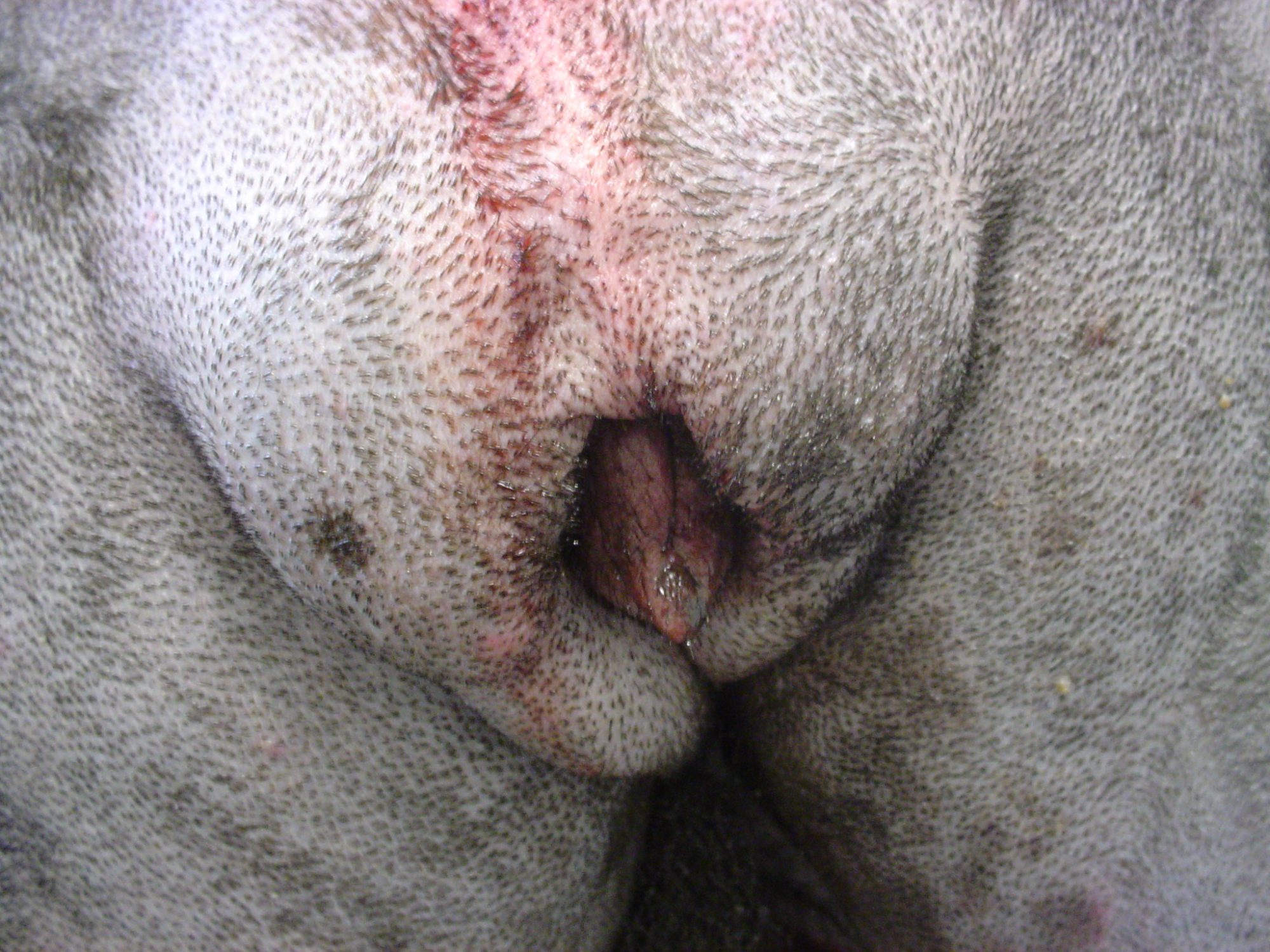
The treatment is a reconstructive surgery called vulvoplasty or episioplasty. The goal is to remove the extra skin.
The main challenge is to remove just the right amount. Not too little, and not too much.
Kona’s pet owner wisely chose to have her spayed under the same anesthesia. Her vet asked me to look into the possibility of a malformation of her urinary system called an ectopic ureter. The ureter is the tiny tube between the kidney and the bladder.
It was a possibility because Kona was constantly leaking urine, i.e. she was incontinent.
During surgery, we removed the extra skin fold, spayed her, found no ectopic ureter… but found another condition.
She had a hydro-ureter, i.e. a ureter that was huge, about 5 times bigger than on the other side. This required removing it, and sacrificing the kidney on the same side – of course after calling the owner in the middle of surgery to request permission to do so.
Surgery was uneventful, and Kona recovered smoothly from anesthesia.
Here is a (warning, graphic) picture of the kidney and the enlarged ureter (hydro-ureter) in another patient, a 6 year old Malamute.
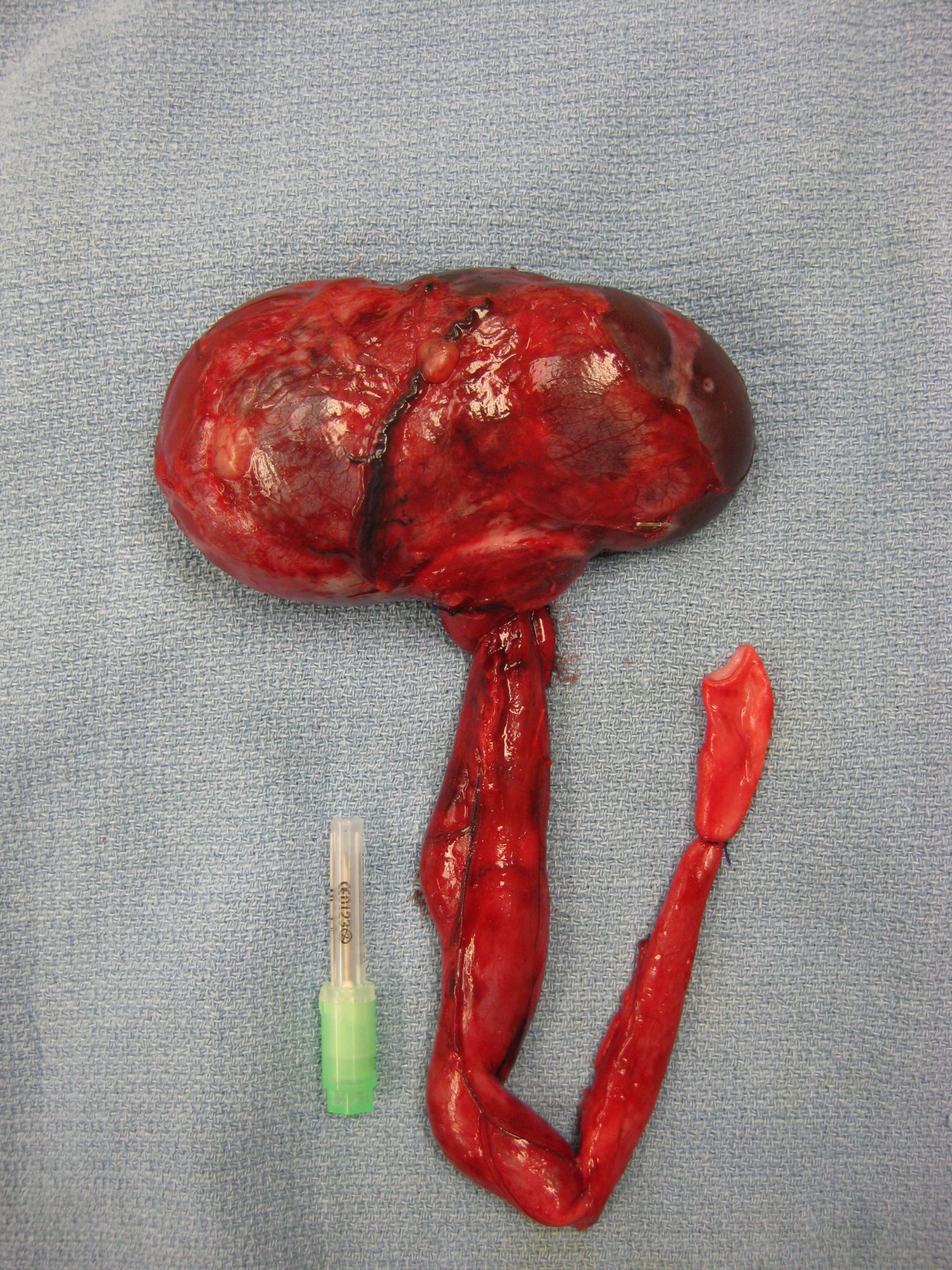
Three weeks later, her owner EB writes:
“Kona is doing well. I have not noticed any leaking and when she urinates, it is a steady stream. Her incision looks great and she is her spunky self.”
Obviously, this is an unusual situation, but a good reminder to keep an open mind when a patient has an unusual situation, like leaking urine constantly.
Phil Zeltzman, DVM, DACVS, CVJ, Fear Free Certified

Dr. Phil Zeltzman is a traveling veterinary surgeon in Pennsylvania & New Jersey. An award-winning author, he loves to share his adventures in practice along with information about vet medicine and surgery that can really help your pets. Dr. Zeltzman specializes in orthopedic, neurologic, cancer, and soft tissue surgeries for dogs, cats, and small exotics. By working with local family vets, he offers the best surgical care, safest anesthesia, and utmost pain management to all his patients. Sign up to get an email when he updates his blog, and follow him on Facebook, too!
Your last surgery of 2020 was what???
I am perfectly aware that this is going to sound very weird to some pet owners.
I (still) wanted to share this because this surgery – the very last one I performed in 2020 – easily solves an annoying, itchy, ongoing “back end” problem…
Rigby, a super sweet 7 year old Pitbull, has had repeated urinary tract infections (UTIs).

The cause was an extra skin fold that covered her vulva.
The end result is a dark, moist, warm environment where bacteria thrive… then go up into the bladder, causing repeated infections.
This common (and under-diagnosed) condition is called a redundant vulvar fold, aka hooded vulva, vulvar fold dermatitis or recessed vulva.
The solution is a reconstructive surgery to remove the extra skin (vulvoplasty or episioplasty).
The main challenge in surgery is to remove just the right amount of skin. Not too little, and not too much.
Rather than a long story, here are before and after pictures.
On the left, you cannot see a vulva at all. It’s covered by the skin fold.
On the right, immediately after surgery, you can see the vulva.
Please be aware, this picture can seem graphic to some readers!
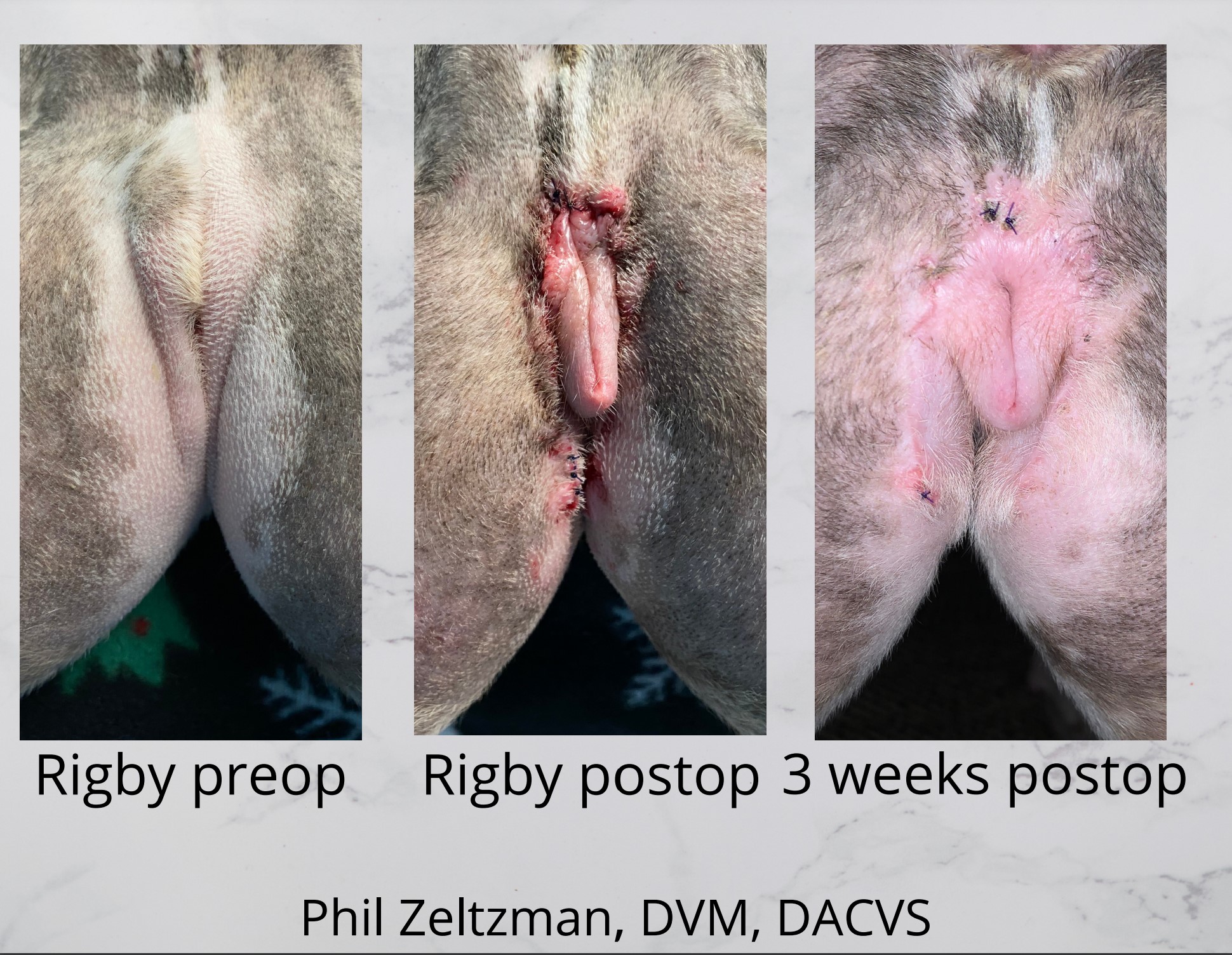
After 3 weeks, Rigby’s back end looks much better. Her vulva is visible, with no skin fold, and therefore no hidden place for bacteria to hide.
Her owner writes: “Her surgical wound is healed and the sutures are almost absorbed. She’s completely stopped licking and all of the inflammation/ irritation from the post op pictures is healed. The anatomy really looks perfect.”
Phil Zeltzman, DVM, DACVS, CVJ, Fear Free Certified

Dr. Phil Zeltzman is a traveling veterinary surgeon in Pennsylvania & New Jersey. An award-winning author, he loves to share his adventures in practice along with information about vet medicine and surgery that can really help your pets. Dr. Zeltzman specializes in orthopedic, neurologic, cancer, and soft tissue surgeries for dogs, cats, and small exotics. By working with local family vets, he offers the best surgical care, safest anesthesia, and utmost pain management to all his patients. Sign up to get an email when he updates his blog, and follow him on Facebook, too!
You did cosmetic surgery on your dog’s WHAT???
Piper, a 6 year old Labrador, had battled bladder infections for her entire life. They cleared up with antibiotics, but kept coming back.

Her family vet at South Mountain Veterinary Hospital (www.southmountainvethospital.com) diagnosed what is called a redundant vulvar fold, which is an extra fold of skin covering her vulva. It is also called “recessed vulva” or “vulvar fold dermatitis”. This is a fairly common condition, especially in overweight dogs, and many go un-diagnosed for years.
How can a skin fold cause bladder infections?
The extra skin fold creates a deep pocket that traps urine. In turn, this pocket creates a warm, moist and dark environment, which is perfect for bacteria to multiply. This causes ongoing infections and sometimes a foul odor. Here is a picture of Piper’s back end before surgery: you can’t see her vulva at all.
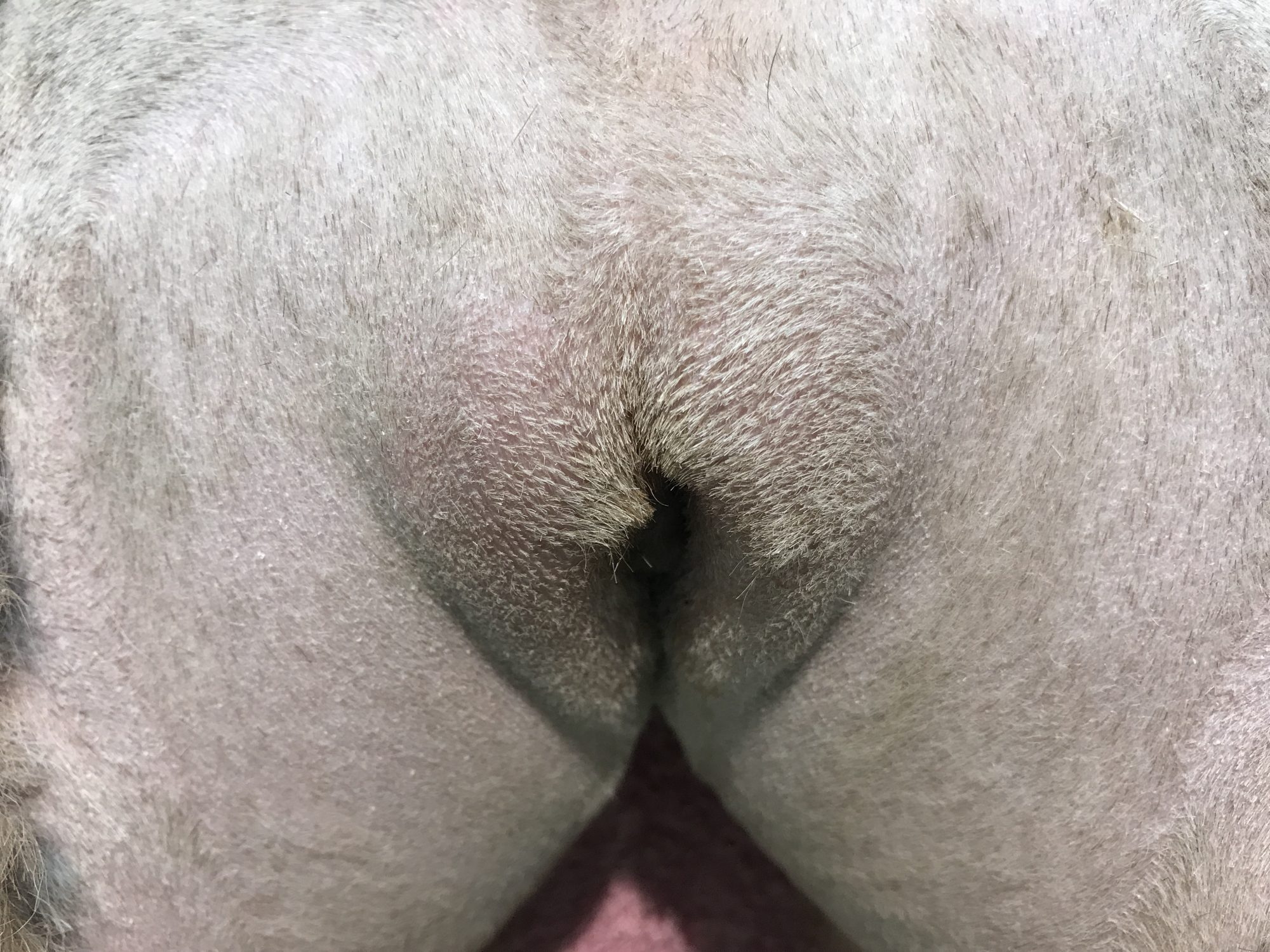
Signs of bladder infections may include licking of the vulva, scooting of the back end, bloody urine and “accidents” in the house. Other conditions may cause similar signs, so your family vet should eliminate other problems, such as bladder stones and even bladder cancer.
How can we fix this annoying condition?
- The Band-Aid approach is the “medical” treatment. We only treat the symptoms by wiping the area and prescribing antibiotics. This does not treat the cause, so it often frustrating because the infection is likely to come back.
- The ideal treatment is surgery. It’s basically plastic surgery on a dog’s vulva! Surgery involves removing the extra skin to provide better ventilation of the vulva.
This reconstructive surgery is called a vulvoplasty or an episioplasty. The main difficulty of the surgery is to remove exactly the right amount of skin: not too much and not too little. Here is a picture of Piper’s back end after surgery.
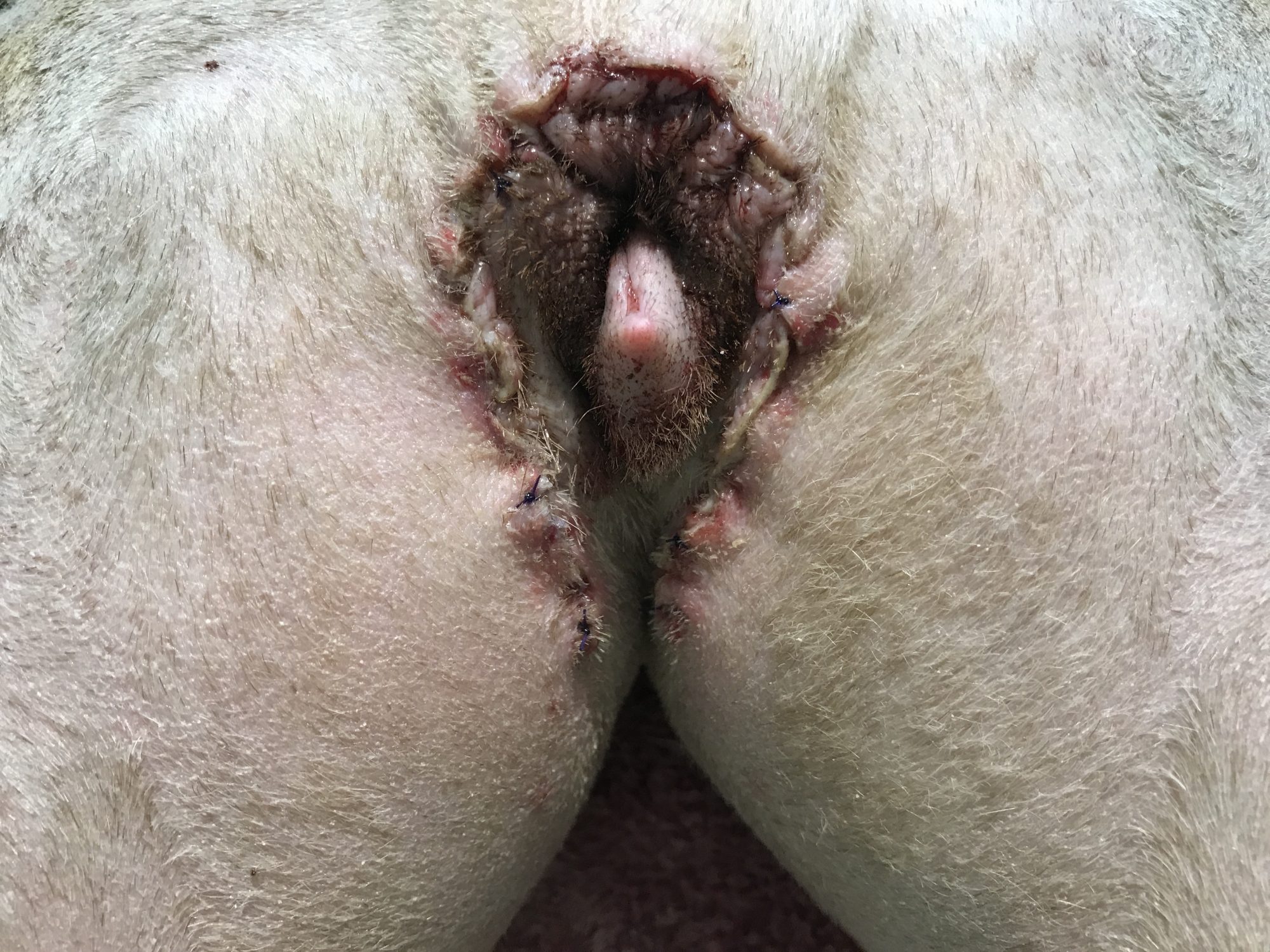
Recovery generally takes 3 weeks. I don’t use external skin sutures, so there are no stitches to remove in this sensitive area… All stitches are internal and eventually dissolve. An E collar (plastic cone) is worn for the full 3 weeks to prevent licking and to protect the incision.
Overall, this is a common yet frustrating condition. Fortunately, surgery is typically very successful and pet owners are usually very happy with the end result… as well as their dogs!

Dr. Phil Zeltzman is a traveling veterinary surgeon in Pennsylvania & New Jersey. An award-winning author, he loves to share his adventures in practice along with information about vet medicine and surgery that can really help your pets. Dr. Zeltzman specializes in orthopedic, neurologic, cancer, and soft tissue surgeries for dogs, cats, and small exotics. By working with local family vets, he offers the best surgical care, safest anesthesia, and utmost pain management to all his patients. Sign up to get an email when he updates his blog, and follow him on Facebook, too!

